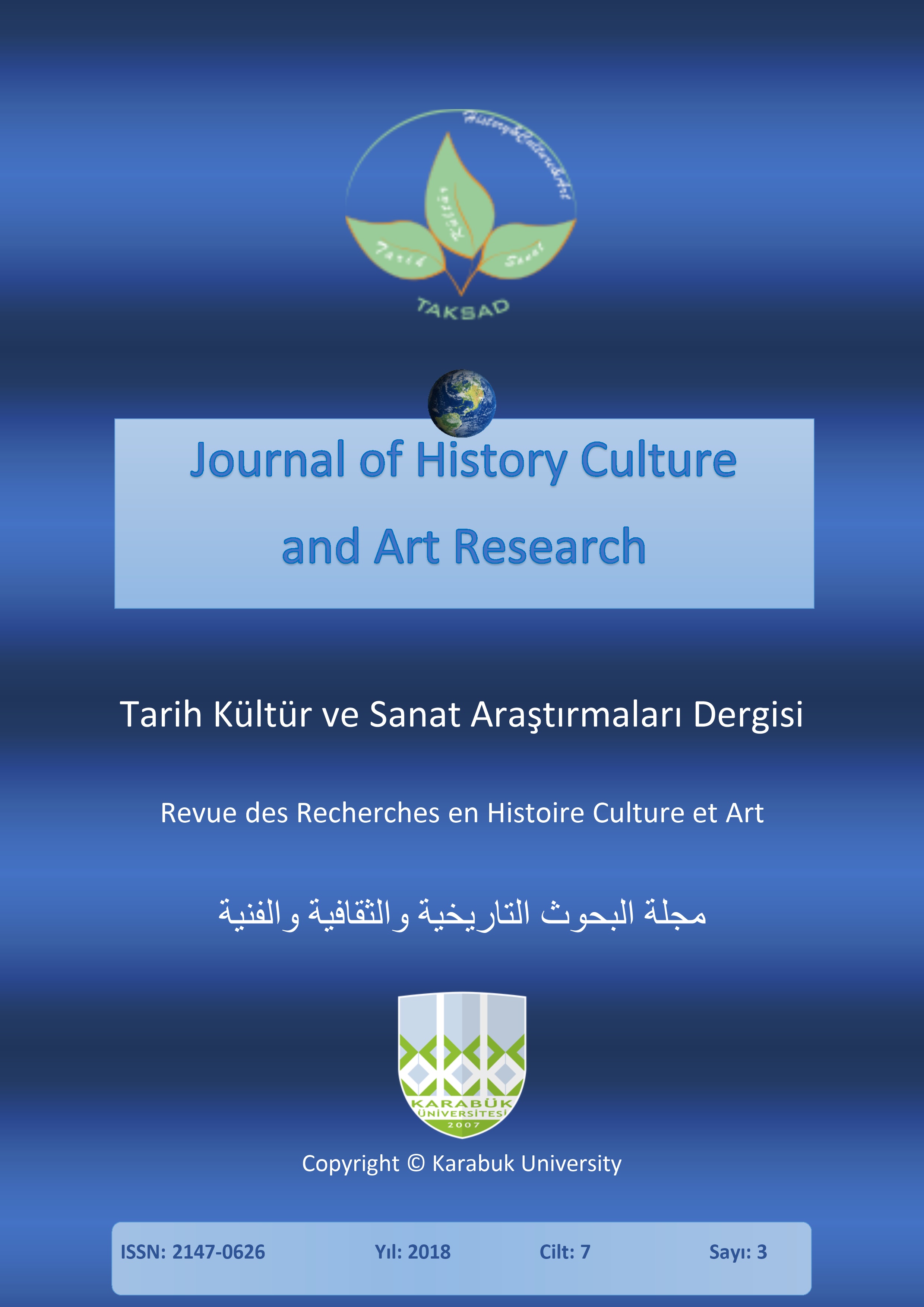Methodology and Model of Technologistics Index
DOI:
https://doi.org/10.7596/taksad.v7i3.1613Keywords:
Logistics performance index (LPI), Networked readiness index (NRI), Global innovation index (GII), Gross domestic product (GDP), Structural equation modelling (SEM).Abstract
In today’s competitive landscape, it is necessary for firms and countries to maintain a competitive edge so as to gain a new consciousness by bringing together technological knowledge and logistics mind. The name of this consciousness is Technologistics. Technologistics is a consciousness that provides a sustainable competitive advantage and advanced company performance to the firms that adds technological base and logistics mind to its management and operation processes. In this paper, it is aimed to develop an index to rank countries in terms of Technologistics performance. Therefore NRI, GII, LPI have been used and these indices have been linked to GDP according to the methodology of the new index. As a result of this paper, TLI was proposed as the most prominent indicator of competitive advantage.
References
Aghion, P.; David, P. A. & Foray, D. (2009). Science, Technology and Innovation for Economic Growt: Linking Policy Research and Practice in ‘STIG Systems', Research Policy, 38, 681-693.
Akgün, A.; İnce, H.; İmamoğlu, S.; Keskin, H. & Koçoğlu, I. (2014). The Mediator Role of Learning Capability and Business Innovativeness between Total Quality Management and Financial Performance. International Journal of Production Research, 52(3), 888-901.
Akman, U.; E. Okay & N. Okay. (2013). “Current snapshot of the Turkish ESCO market”, Energy Policy, pg. 106–115.
Arvis, J. F.; Saslavsky, D.; Ojala, L.; Shepherd, B.; Busch, C. & Raj, A. (2012). Connecting to Compete 2012 Trade Logistics in the Global Economy The Logistics Performance Index and Its Indicators. the World Bank.
Arvis, J. F.; Saslavsky, D.; Ojala, L.; Shepherd, B.; Busch, C. & Raj, A. (2014). The Logistics Performance Index and Its Indicators. Washington: The World Bank.
Breznitz, D. & Murphree, M. (2011). Run of the Red Queen: Government, Innovation, Globalization and Economic Growth in China, Yale University Press, New Haven and London.
Budd, C.; Harris, C. & Vickers, J. (1993). "A Model of the Evolution of Duopoly: Does the Asymmetry between Firms Tend to Increase or Decrease?", Review of Economic Studies 60, 543-573.
Burmaoğlu, S. (2012). Ulusal İnovasyon Göstergeleri ile Ulusal Lojistik Performansı Arasında İlişki: AB Ülkeleri Üzerine Bir Araştırma. Ege Akademik Bakış, 193-208.
Cornell University, INSEAD, and the World Intellectual Property Organization, 2012.
Cornell University, INSEAD, and the World Intellectual Property Organization, 2013.
Cornell University, INSEAD, and the World Intellectual Property Organization, 2015.
Domar, E. D. (1946). Capital Expansion, Rate of Growth, and Employment, Econometrica 14 (2), 137 − 147.
Erkan, D. D. (2014). Türkiye'de Lojistik Sektörü ve Rekabet Gücü. Assam Uluslararası Hakemli Dergi, 1, 44-65.
F. P. Ramsey. (1928). “A Mathematical Theory of Saving”. The Economic Journal, Volume 38, Issue 152, 543–559
Fagerberg, J. (2004). “Innovation: A guide to the Literature”, in Fagerberg, J., Mowery, D., and Nelson, R (eds.) The Oxford Handbook of Innovation, Oxford University Press, Oxford, pg. 1-26.
Founou, R. (2002). The Role of IT in Logistics Competitive Advantage or Strategic Necessity? 2nd Swiss Transport Research Conference, (s. 1-21).
Genç, M. & Atasoy, Y. (2010). “Ar-Ge Harcamaları ve Ekonomik Büyüme İlişkisi: Panel Veri Analizi”, Bilgi Ekonomisi ve Yönetimi Dergisi, V(II), 27-34.
Göçer, İ. (2013). Ar-Ge Harcamalarının Yüksek Teknolojili Ürün İhracatı, Dış Ticaret Dengesi ve Ekonomik Büyüme Üzerindeki Etkileri, Maliye Dergisi, 165, Temmuz-Aralık, No: 215-240.
Guloglu, Bulent & R. Baris Tekin (2012). “A Panel Causality Analysis Of The Relationship Among Research And Development, Innovation, And Economıc Growth In High-Income OECD Countries”, Eurasian Economic Review,2(1), 2012, s.32-44.
Harrod, R. F. (1939). An Essay in Dynamic Theory, Economic Journal 49, 14 − 33.
Karen, Esteves & Paulo, Roberto Feldmann (2016). “Why Brazil does not innovate: a comparison among nations”, vol.13, issue 1, pages 29-38.
Klochikhin, E. A. (2012). The challenges of fostering innovation: Russia's unstable progress. International Journal of Economics and Business Research 4 (6), 659-678
Mohan, C. (2013). The Impact of Logistic Management on Global Competitiveness. International Journal of Business and Management Invention, 2(3), 39-42.
Ojala, L. & Çelebi, D. (2015). The World Bank’s Logistics Performance Index (LPI) and drivers of logistics performance. OECD.
Ozer, M. & Çiftçi, N. (2009). Ar-Ge Harcamaları ve İhracat İlişkisi: OECD Ülkeleri Panel Veri Analizi, Dumlupınar Üniversitesi Sosyal Bilimler Dergisi, (23), 39-49.
Puertas, R.; Martı, L. & Garcia, L. (2013). Logistics performance and export competitiveness: European experience. Springer Science+Business Media.
Robert, M. Solow (1956). “A Contribution to the Theory of Economic Growth”. Source: The Quarterly Journal of Economics, Vol. 70, No. 1, pp. 65-94.
Roy, J. (2011). Logistics and the Competitiveness of Canadian Supply Chains. 01 04, 2015 tarihinde international.gc web site: http://www.international.gc.ca
Sandberg, E. & Abrahamsson, M. (2011). Logistics Capabilities for Sustainable Competitive Advantage. International Journal of Logistics, 61-75.
Šımkova, I. & Stopka, O. (2014). The logistics performance index methodology. Logi, Pardubice: Univerzita Pardubice, 5(1), s. 61-70.
T. W. Swan (1956). “Economıc Growth and Capital Accumulation”. The Economic Record, vol. 32, issue 2, pages 334-361.
TUİK. (2014). 11 20, 2015 tarihinde TUİK- Türkiye İstatistik Kurumu: http://www.tuik.gov.tr/PreIstatistikMeta.do;jsessionid=np0ZVyJGtTSnGZhQlQrMvZGnlChLt14L4yBQ7dLfQ0rGlkpMGGLh!1863195282?istab_id=9035 adresinden alındı
Ulku, Hulya (2004). "R&D, Innovation, and Economic Growth: An Empirical Analysis", IMF Working Paper, No.04/185.
Wonglimpiyarat, Jarunee (2010). “Innovation Index and The Innovation Capacity of Nations”. Futures 42: 247-253.
Vilko, J.; Karandassov, B. & Myller, E. (2011, November). Logistic infrastructure and its effects on economic development. China-USA Business Review, 10(11).
Downloads
Published
How to Cite
Issue
Section
License
All papers licensed under Creative Commons 4.0 CC-BY.- Share — copy and redistribute the material in any medium or format
- Adapt — remix, transform, and build upon the material for any purpose, even commercially.
Under the following terms:
Attribution — You must give appropriate credit, provide a link to the license, and indicate if changes were made. You may do so in any reasonable manner, but not in any way that suggests the licensor endorses you or your use.
- No additional restrictions — You may not apply legal terms or technological measures that legally restrict others from doing anything the license permits.







